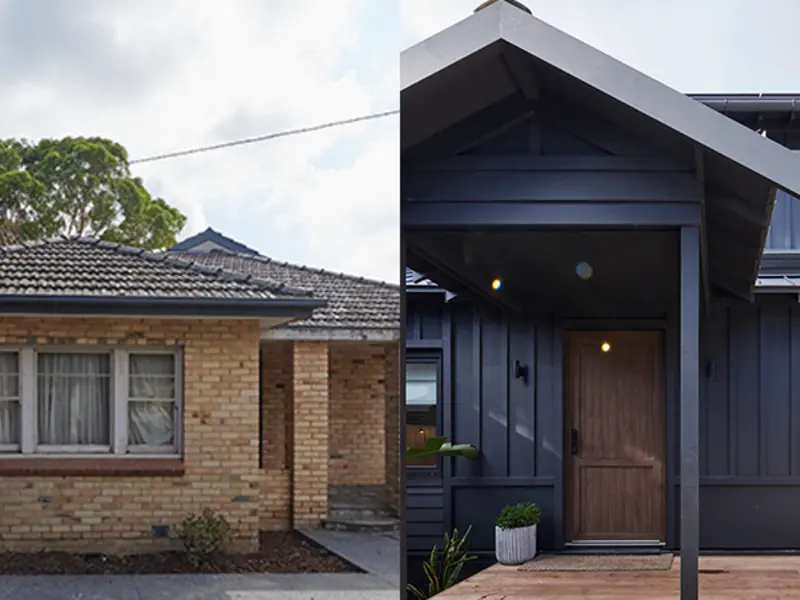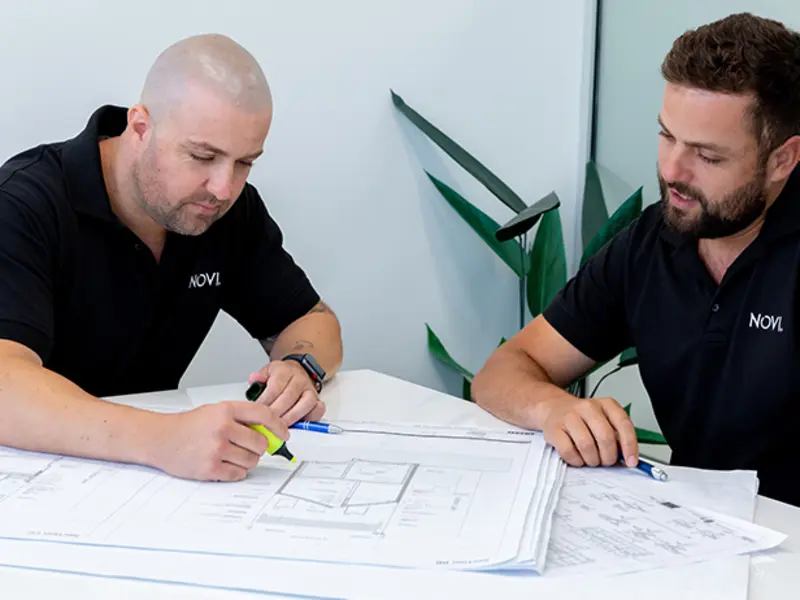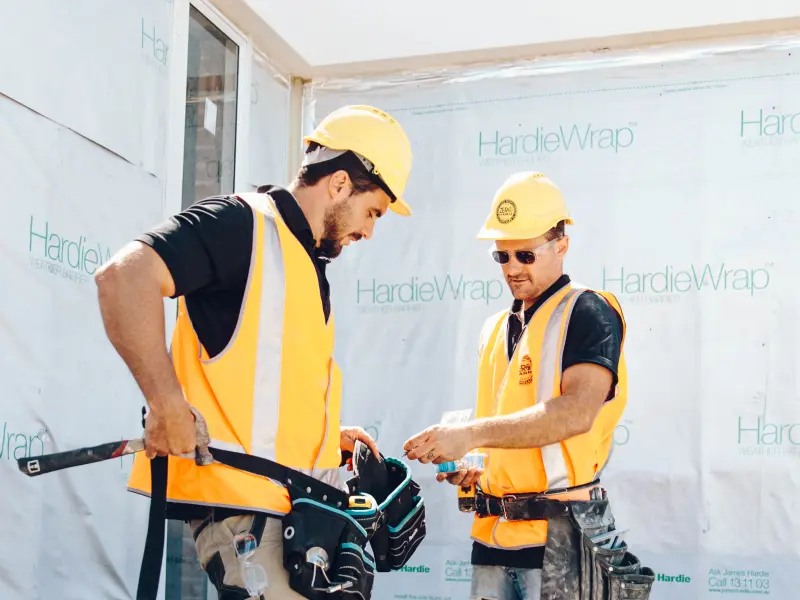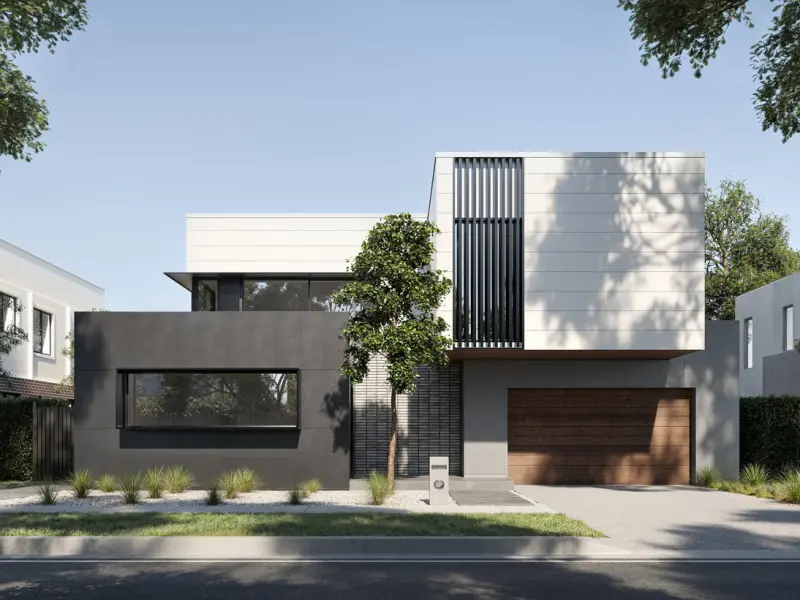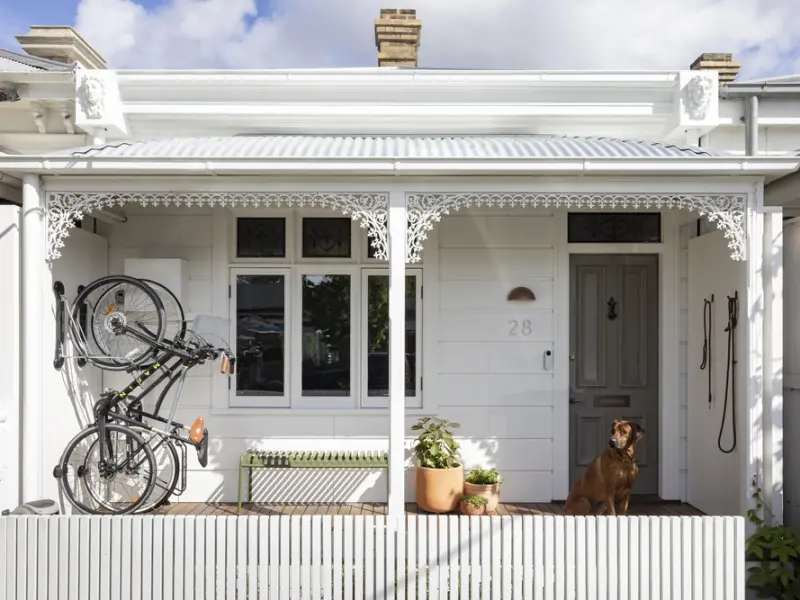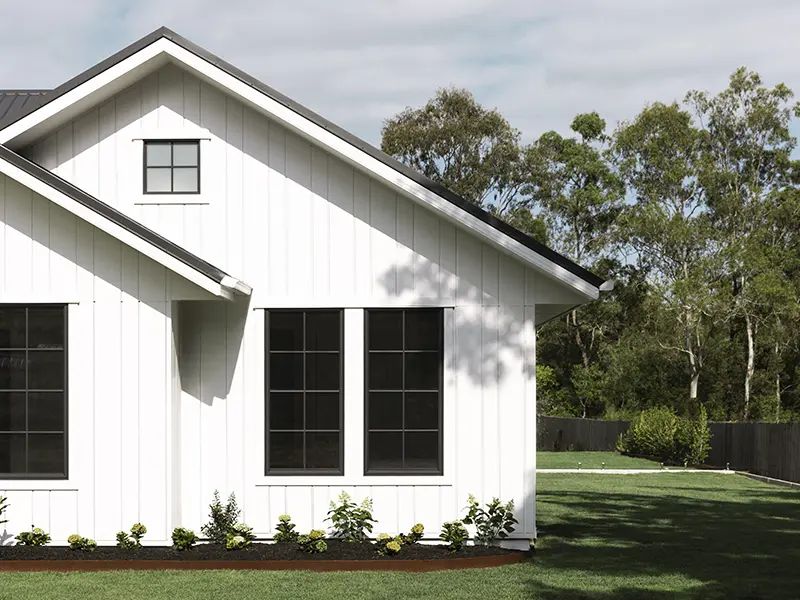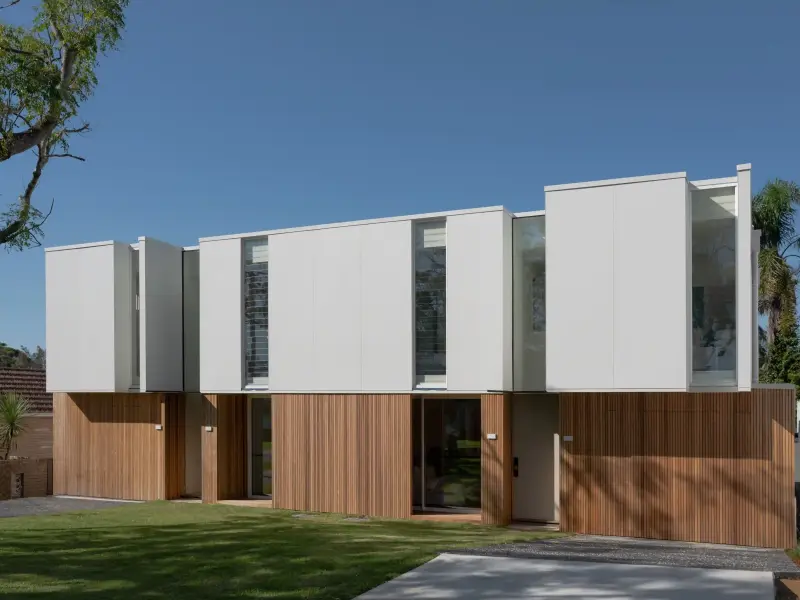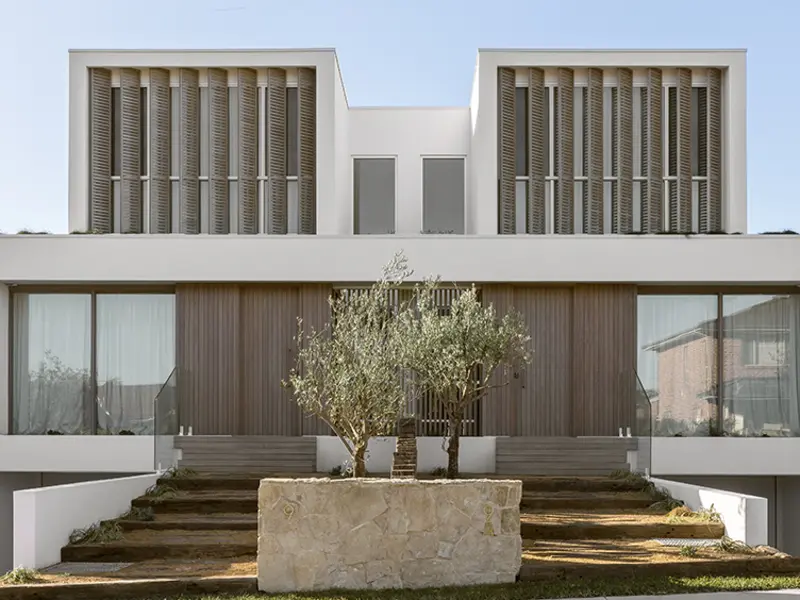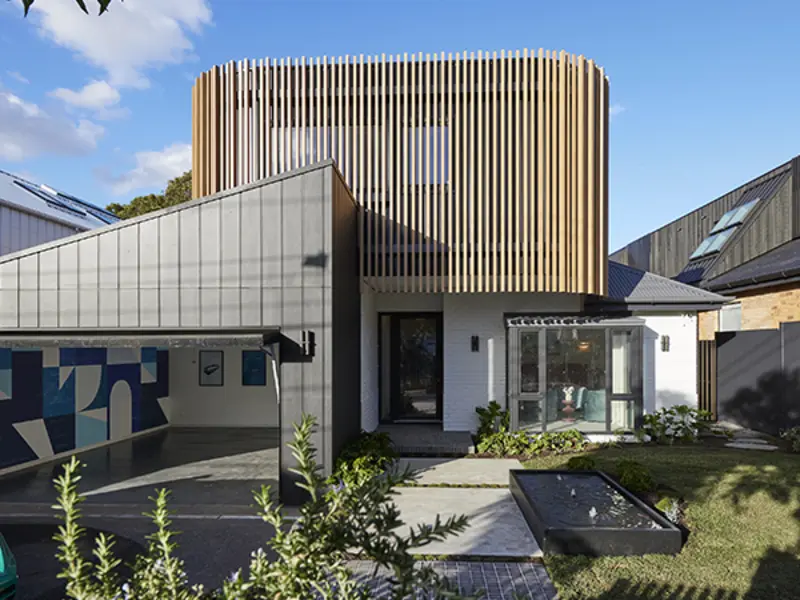
Achieving a 7-star energy rating on a new home with exterior cladding
No matter where you live in Australia, an energy-efficient home is a priority, and recent government initiatives have made that law; changes to the NCC 2022 (National Construction Code) requiring that new homes reach 7-stars are now mandatory in Victoria, Queensland and in New South Wales. While it means the expense to build a home increases, the savings and efficiencies created from a more sustainable home tend to offset this in the long term. In this article, we’ll cover:
What elements contribute to a 7-star energy rating
Break down the common terminology
Explain how to communicate them to your builder
What contributes towards a 7-star energy rating?
There are lots of factors in achieving this high energy rating, and we’re sharing each with a brief explanation, in order of importance.
Orientation of your home
Orientation refers to the positioning of your home in relation to the path of the sun. North facing stands as the optimal orientation, with living areas enjoying the sunlight throughout the day (facing the north) and sleeping areas located on the south side (or colder side) of the home. It increases the opportunity for solar gains when it is most optimal, and reduces the need to rely on artificial forms of heating and cooling – the sun does the work for you!
Windows that work harder
One of the easiest ways for heat and cool to escape your home is via the windows. The more glass windows, the lower the insulation. The gold standard is a thermally broken window. Technically, that means a thermal break is installed in the frame to physically separate the interior part of the window and break the pathways for heat transference. Layman’s terms? It stops heat escaping or getting into the house quite as quickly.
Double glazed windows are more commonly chosen, where two layers of glass are installed which are filled with inert gas. That makes it kind of like a woollen jumper (or an insulation batt). It can also insulate against sound.
Single glazed windows - just one lonely pane - come in at third place, for efficiency, and probably won’t help too much towards that coveted 7-star rating.

Adding or removing window shading
Depending upon where you live in Australia, what you need from your window shading will change. Colder climate homes should aim for fewer eaves and awnings to increase the amount of sunlight allowed inside, whereas warmer climates should increase them! It’s all about reducing or increasing the heat that can enter the home.

Increasing thermal mass and insulation
Let’s break this down. Insulation prevents heat from entering, and thermal mass is all about heat retention: some materials have a higher capacity to absorb, store and release heat. Again, your climate determines how your approach to thermal mass and insulation should work.
Think about how and where you can incorporate materials throughout your home’s build to increase its thermal mass. For example, concrete has a high capacity to store heat, whereas insulation foam has little heat storage. The right combination of materials will create an optimum temperature in your home.
Wall cavities that work optimally
The space between the walls, the wall cavity can create a space that improves ventilation, when compared to a direct to frame method. It connects the internal wall cavity with the exterior environment via vents, allowing air in and out.
Ventilation in warmer climates
In warm climates, a 7-star rating is more easily attained with the inclusion of ceiling fans for cooling over air conditioning, while a ventilated roof space allows heat to disperse and to remove the heat absorbed during the day. This means a cooler, more energy-efficient home.
Reflecting heat away from your home (reflectivity)
Another clever feature is to increase reflectivity of your home’s external surfaces, meaning they bounce the light away from the surface of your home to keep it cooler. Hardie™ Weather Barrier is a great example: a reflective sarking that acts like a mirror to reflect radiant heat. It delivers a triple-shield of protection to help against external weather penetration, internal condensation build-up and external heat penetration.
Choosing colour that works harder
Varying the colours used on your home’s exterior can result in varying temperatures under the same conditions; for example, white colours are cooler and darker ones warmer. However, this is the least influential variable that can affect thermal performance. It is important to consider all other elements to ensure you can choose any paint colour for your home.
Ultimately, your home’s design will be a combination of the system provided by an architect or designer and a set of design upgrades provided by an energy efficiency assessor (see glossary of terms, below), in order to achieve a 7-star energy rating.
How can my material choice assist me in achieving a 7-star rating?
Hardie™ exterior cladding used on energy-efficient designs can help you reduce the build costs of a 7-star home, whilst also expanding your design possibilities. Hardie™ exterior cladding can be used as a full exterior solution for modern and energy efficient home designs - but remember, each design will be assessed on its merits by an energy efficiency assessor.
Hardie™ exterior cladding is a full exterior solution that can be used on both the ground and upper floor to help you to achieve a 7-star rating at a lower cost compared to brick veneer, whilst also expanding your design possibilities. Explore the Hardie™ Architectural Collection.
Keyword glossary
Energy efficiency: Using less energy to achieve the same outcome. A home’s energy efficiency is calculated by measuring the amount of energy that is used for temperature management.
Star Rating: Star ratings are based on information about the home’s design, construction materials and the climate where it is being built, providing a ranking (between 1 and 10) about the home’s thermal performance.
7-star: The new 7-star standard is the minimum that new homes are required to be built to, rated out of 10. It measures the level of energy efficiency in a home.
NatHERS Certificate: Valid in all of Australia except for NSW (see BASIX), new homes are rated out of 10 using the Nationwide House Energy Rating Scheme (NatHERS). To achieve a certificate, a minimum of 7 stars is required. The NatHERS Certificate allows builders, certifiers and regulatory authorities to confirm that the building has been built to the design on which the energy rating assessment is based.
NCC Update 2022: The National Construction Code Update 2022 requires that new homes reach 7-stars, and is now mandatory in New South Wales and from May 2024 in Victoria and Queensland.
Energy Efficiency Assessor: Accredited professionals whose role is to facilitate sustainable outcomes in design to improve the energy efficiency of commercial and residential buildings.
Building Certifier: Independent public officials who issue a development certificate if all legislative requirements are met.
BASIX: a sustainability assessment tool for residential buildings in New South Wales. It stands for Building Sustainability Index.
How do I talk to my builder about an energy efficient home upgrade?
Using less energy doesn’t have to be costly or complicated. For an accredited assessor to assess a project through the NatHERS process, they require the full plans, sections and elevations for the building as well as the building materials and glazing types that are intending to be used. So your builder should be on board with the desired outcome from the beginning.
Good communication is essential when working with a builder - read our tips for maintaining a great relationship here.

Share the MyHardies platform with your builder to help them access useful information to build and design your new home to a 7-star energy rating.
